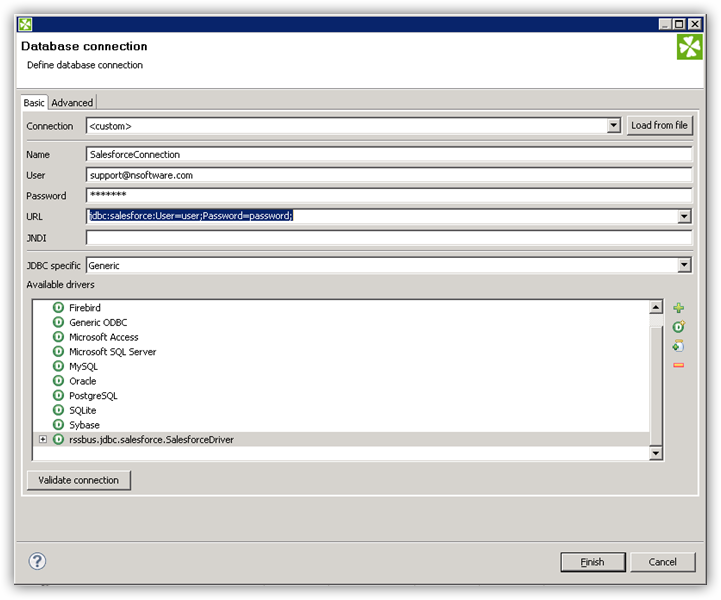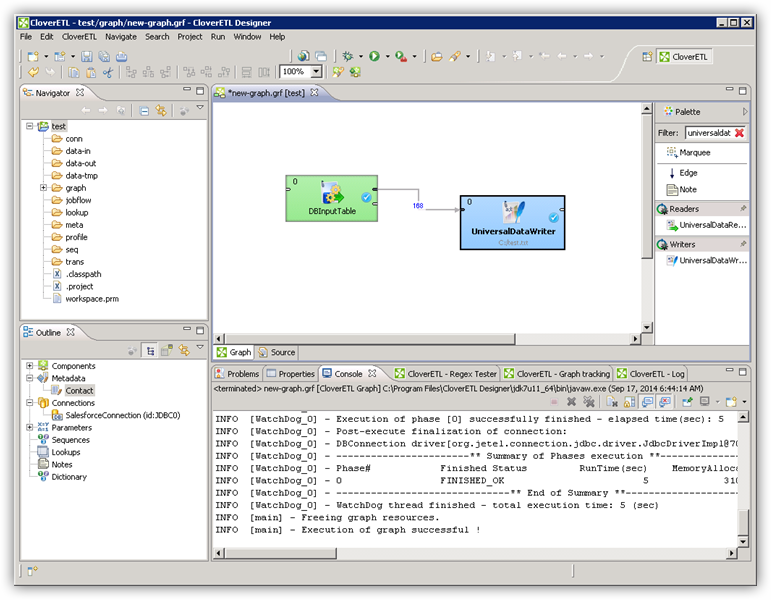Discover how a bimodal integration strategy can address the major data management challenges facing your organization today.
Get the Report →Connect to Procore Data in CloverDX (formerly CloverETL)
Transfer Procore data using the visual workflow in the CloverDX data integration tool.
The CData JDBC Driver for Procore enables you to use the data transformation components in CloverDX (formerly CloverETL) to work with Procore as sources. In this article, you will use the JDBC Driver for Procore to set up a simple transfer into a flat file. The CData JDBC Driver for Procore enables you to use the data transformation components in CloverDX (formerly CloverETL) to work with Procore as sources. In this article, you will use the JDBC Driver for Procore to set up a simple transfer into a flat file.
Connect to Procore as a JDBC Data Source
- Create the connection to Procore data. In a new CloverDX graph, right-click the Connections node in the Outline pane and click Connections -> Create Connection. The Database Connection wizard is displayed.
- Click the plus icon to load a driver from a JAR. Browse to the lib subfolder of the installation directory and select the cdata.jdbc.api.jar file.
- Enter the JDBC URL.
Start by setting the Profile connection property to the location of the Procore Profile on disk (e.g. C:\profiles\Procore.apip). Next, set the ProfileSettings connection property to the connection string for Procore (see below).
Procore API Profile Settings
To authenticate to Procore, and connect to your own data or to allow other users to connect to their data, you can use the OAuth standard.
First, you will need to register an OAuth application with Procore. You can do so by logging to your Developer Account and going to Create New App. Follow all necessary steps to register your app. First you will need to create a new version of Sandbox Manifest and then promote it to Production in order to get your Production Crendentials. Your Oauth application will be assigned a client id and a client secret.
After setting the following connection properties, you are ready to connect:
- AuthScheme: Set this to OAuth.
- InitiateOAuth: Set this to GETANDREFRESH. You can use InitiateOAuth to manage the process to obtain the OAuthAccessToken.
- OAuthClientId: Set this to the client_id that is specified in you app settings.
- OAuthClientSecret: Set this to the client_secret that is specified in you app settings.
- CallbackURL: Set this to the Redirect URI that is specified in your app settings
Built-in Connection String Designer
For assistance in constructing the JDBC URL, use the connection string designer built into the Procore JDBC Driver. Either double-click the JAR file or execute the jar file from the command-line.
java -jar cdata.jdbc.api.jarFill in the connection properties and copy the connection string to the clipboard.
![Using the built-in connection string designer to generate a JDBC URL (Salesforce is shown.)]()
A typical JDBC URL is below:
jdbc:api:Profile=C:\profiles\Procore.apip;Authscheme=OAuth;OAuthClientId=your_client_id;OAuthClientSecret=your_client_secret;CallbackUrl=your_callback_url;InitiateOAuth=GETANDREFRESH

Query Procore Data with the DBInputTable Component
- Drag a DBInputTable from the Readers selection of the Palette onto the job flow and double-click it to open the configuration editor.
- In the DB connection property, select the Procore JDBC data source from the drop-down menu.
- Enter the SQL query. For example:
SELECT Id, Name FROM Companies WHERE IsActive = 'true'
Write the Output of the Query to a UniversalDataWriter
- Drag a UniversalDataWriter from the Writers selection onto the jobflow.
- Double-click the UniversalDataWriter to open the configuration editor and add a file URL.
- Right-click the DBInputTable and then click Extract Metadata.
- Connect the output port of the DBInputTable to the UniversalDataWriter.
- In the resulting Select Metadata menu for the UniversalDataWriter, choose the Companies table. (You can also open this menu by right-clicking the input port for the UniversalDataWriter.)
- Click Run to write to the file.








